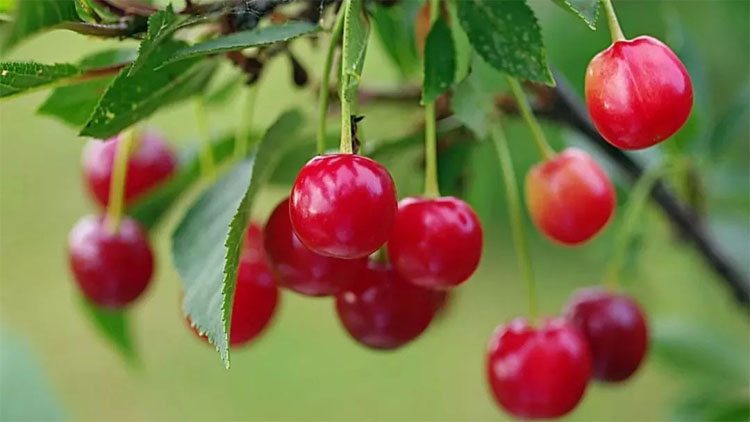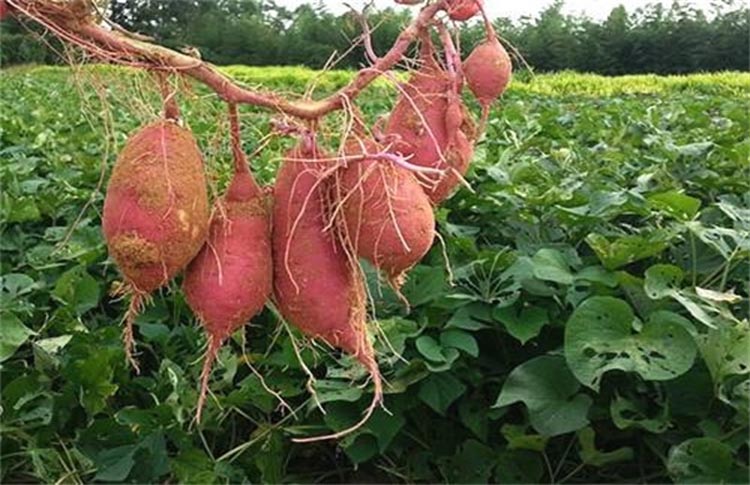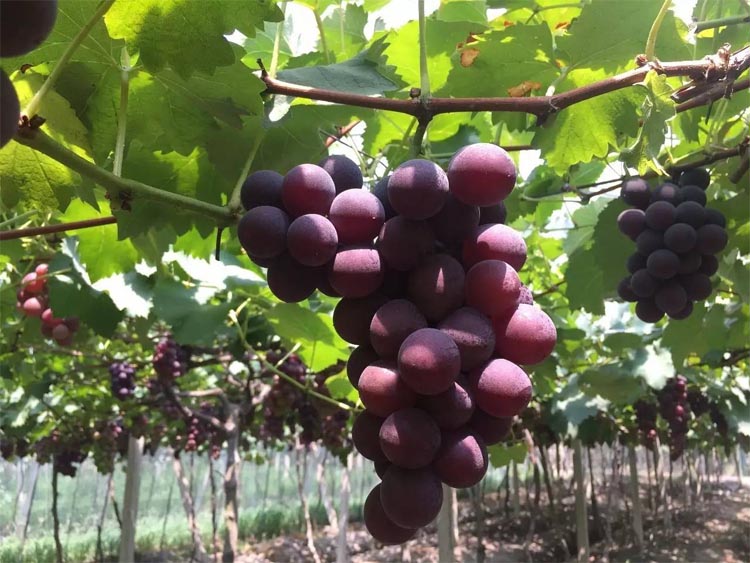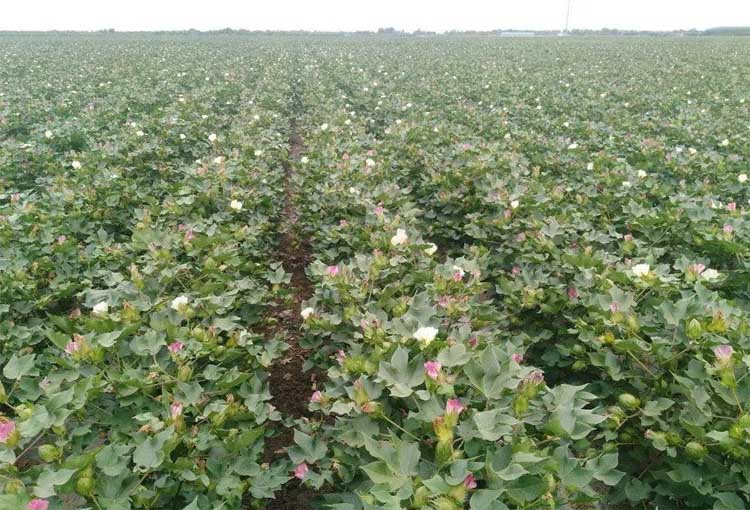Fertilization program for 24 cash crops (20-24)
VIEWS: times Release Date:2021-02-02
21.Cherry

Cherries are concentrated in the first half of the growing season from leaf expansion, extraction, flowering and fruit development to maturity. It only takes about 45 days from flowering to fruit ripening, and the flower bud differentiation is in the first half of the fruit harvest. It is basically completed within a month, so the cherry has the characteristics of rapid growth and development and concentration of fertilizer.
A large amount of fertilizer is required from the leaf development stage to before the fruit matures during the year, followed by the amount of fertilizer required during the peak period of flower bud differentiation after fruit picking, and less fertilizer during the rest of the year. In production, we must do a good job of fertilizing before winter, flowering and after fruit picking. This is an important measure to increase yield and improve quality.
22, sweet potato

Sweet potato uses underground roots as an economic product. According to research, every 1,000 kg of fresh potatoes needs nitrogen (N) 4.9-5.0 kg, phosphorus (P2O5) 1.3-2.0 kg, and potassium (K2O) 10.5-12.0 kg. The ratio of nitrogen, phosphorus, and potassium is about 1:0.3:2.1.
Sweet potato has the most demand for nitrogen, phosphorus, and potassium throughout the life of the three elements, potassium is the most, followed by nitrogen, and phosphorus is less. The trend of absorbing water and nutrients from the soil is also roughly the same. There are significant differences in the amount and rate of absorption of nitrogen, phosphorus, and potassium at different growth stages during the whole growth process of sweet potato.
The absorption of nitrogen is fast in the early and middle stages of growth, and the demand is large. It is mainly used for the growth of stems and leaves. The absorption and utilization of nitrogen reaches the peak during the peak production period of stems and leaves, and the stems and leaves decline in the later stage, and the tubers rapidly expand. The absorption rate of nitrogen slows down and the demand decreases;
The absorption and utilization of phosphorus gradually increases with the growth of stems and leaves, and the absorption and utilization reaches the peak during the tuber expansion period; the absorption and utilization of potassium is higher than nitrogen and phosphorus from the beginning of growth to harvest.
With the growth of leaf vines, the amount of potassium absorbed gradually increases, and the aboveground part grows slowly from fullness, its leaf area coefficient begins to decrease, and the stem and leaf weight gradually decreases. The rapid expansion of potato chunks especially needs to absorb a large amount of potassium, which is required for sweet potatoes. The general trend of the three elements of nitrogen, phosphorus and potassium is rapid absorption in the early and mid-term, and slow in the later period.
23.Grapes

Although the grape is a vine fruit tree, the root system is developed, the vine has many leaves, strong polarity, vigorous growth, high yield and long life. Its fertilizer requirements are:
One is that there are many elements required. According to the test and production verification, the necessary elements are carbon, hydrogen, nitrogen, phosphorus, potassium, calcium, magnesium, sulfur, iron, boron, manganese, copper, zinc, molybdenum and chlorine, etc. 16 kinds, if one of them lacks Or insufficient, it will affect normal physiological activities, other elements can not be replaced.
The second is a large amount of fertilizer. According to experiments, for every 100 kilograms of fruit, 300 grams of pure nitrogen, 150 grams of pure phosphorus, and 360 grams of pure potassium are required, plus the nutrients required for the growth of vines, shoots, and leaves, and the loss is fixed. The 667 square meters yields a high yield of 2000 kg. In the garden, 12.5-15.0 kg of pure nitrogen, 10-12.5 kg of pure phosphorus, and 10.0-15.0 kg of pure potassium are required per 667 square meters per year. The ratio of nitrogen, phosphorus, and potassium is roughly 10:5:12.
The third is the large demand for potassium. Grapes are a well-known "potassium plant". They need a lot of potassium throughout the growth period, and their demand ranks first among the three elements. If potassium is lacking or insufficient, the leaves cannot produce starch and fatty acids, and nitrate
Increased nitrogen, few and small leaves, withered leaf margins, reduced new shoots, brown stalks, shrunken or cracked fruit kernels, poor coloration, low sugar, low taste and acidity, poor quality, and weak plant resistance to cold and drought.
Fourth, the growth and development stages of the year are different, and the required elements and quantities are also the same. From germination, flowering to the early stage of young fruit, the most nitrogen is required, accounting for about 64.5% of the annual demand. Phosphorus absorption gradually increased with the growth of branches and leaves, flowering and fruit setting, and fruit enlargement, and reached the peak at the peak of new shoot growth and fruit size.
Although the absorption of potassium starts from the development of leaves and shoots, the most potassium is required for the fruit during the period of hypertrophy to the coloring period. In this period, if potassium is insufficient, the color of the fruit is poor, the sugar is low, and the taste is sour. In severe cases, it may not even be ripe.
24. Cotton

The normal growth and development of cotton goes through the seedling stage, bud stage, flower boll stage, boll spitting stage and other stages. Generally, 100 kg of lint produced per 667 square meters needs to absorb 7-8 kg of nitrogen, 4-6 kg of phosphorus and 7-15 kg of potassium; 200 kg of lint produced in 667 square meters needs to absorb 20-35 kg nitrogen, 7-12 kg phosphorus and 25-35 kg potassium.
Previous : Celery is not easy to grow? Do well in these three aspects management, easy, high quality and high yield
Next : Fertilization program for 24 cash crops (16-20)
Latest News
- The company overcame difficulties and won a "good start" in the first quarter ...2022-03-28
- Safe Production ...2022-03-28
- first-line collection ...2022-03-26
- Huaqiang News ...2022-03-26
- Huaqiang Chemical Strong Agriculture Project ...2022-03-25
- huaqiang news ...2022-03-24
- winning unit ...2022-03-22
- Huaqiang News ...2022-03-21
Related Information
- The best fertilizers for fruits and crops ...2020-05-26
- Huaqiang Chemical Group NPK fertilizer pdf ...2020-04-01
- Humic Acid Fertilizer ...2019-12-31
- Bulk Blending Fertilizer ...2019-12-27
- Water Soluble Fertilizer ...2019-12-08
- NPK Fertilizer ...2019-12-02
- Potassium Sulfate Fertilizer ...2019-11-30
- Urea Fertilizer ...2019-11-21
MESSAGE
Our sales staff will be the first time to get in touch with you,to provide you with the latest price.
-
Chemical Products
-
Compound fertilizer
-
Contact Us
Huaqiang Chemical Group Stock Co.,Ltd.
No.1 Jinping Avenue, Dangyang , Hubei , China
Http://www.hq-chemical.com
info@hq-chemical.com
Tel:+86 717 3431866
Mobile: +86 18627120543
© Copyright 2021 Huaqiang Chemical Group Stock Co.,Ltd. All Rights Reserved



